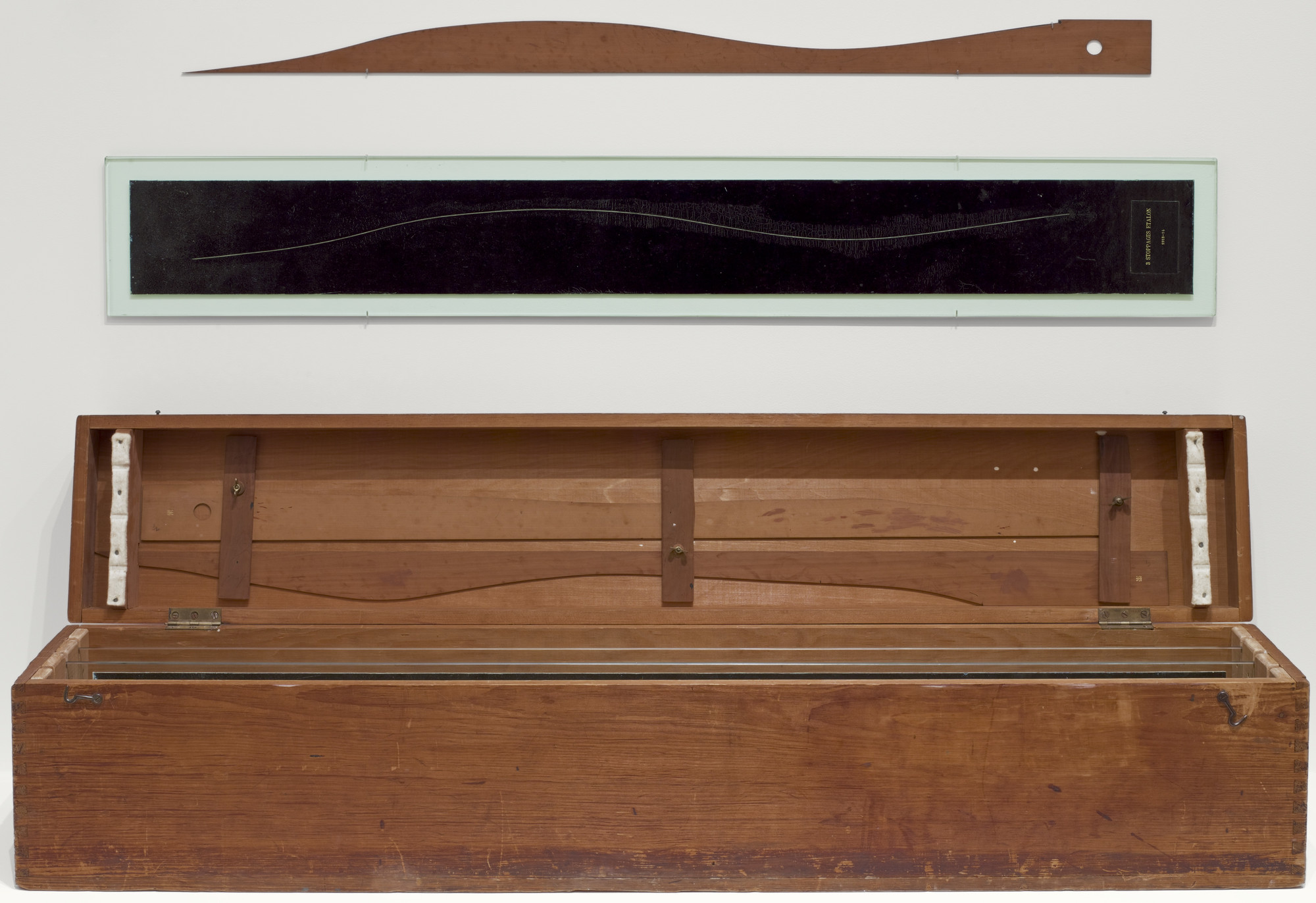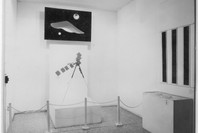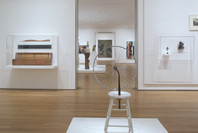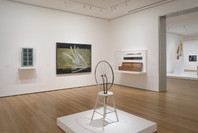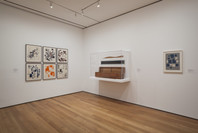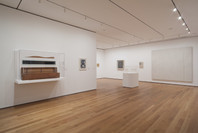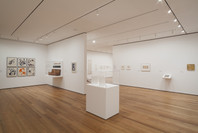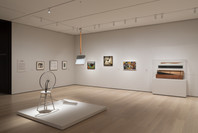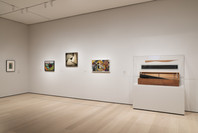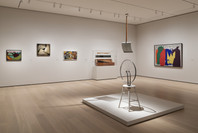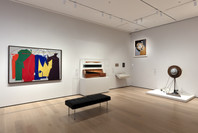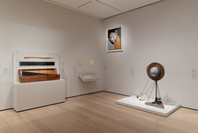It is “a joke about the meter,” Duchamp glibly noted about this piece, but his premise for it reads like a theorem: “If a straight horizontal thread one meter long falls from a height of one meter onto a horizontal plane twisting as it pleases [it] creates a new image of the unit of length.” Duchamp dropped three of these threads onto three stretched canvases, where they were then adhered, in order to preserve the random curves they assumed upon landing. The canvases were cut along those curves, creating a template for new units of measure that retain the meter’s length but undermine its rational basis.
Gallery label from 2020
A working note of Duchamp's describes his idea for this enigmatic work: "A straight horizontal thread one meter long falls from a height of one meter onto a horizontal plane twisting as it pleases and creates a new image of the unit of length." Here, three such threads, each fixed to its own canvas with varnish, and each canvas glued to its own glass panel, are enclosed in a box, along with three lengths of wood (draftsman's straightedges) cut into the shapes drawn by the three threads.
Duchamp later said that 3 Standard Stoppages opened the way "to escape from those traditional methods of expression long associated with art," such as what Duchamp called "retinal painting," art designed for the luxuriance of the eye. This required formal intelligence and a skillful hand on the part of the artist. The Stoppages, on the other hand, depended on chance—which, paradoxically, they at the same time fixed and "standardized." (Duchamp used the phrase "canned chance.") Subordinating art both to accident and to something approximating the scientific method (which they simultaneously parodied), 3 Standard Stoppages advanced a conceptual approach, an absurdist strain, and a way of commenting on both art and the broader culture that inspired countless later artists of many different kinds.
Publication excerpt from The Museum of Modern Art, MoMA Highlights, New York: The Museum of Modern Art, revised 2004, originally published 1999, p. 91.
To make 3 Standard Stoppages, Marcel Duchamp dropped three one-meter-long threads from the height of one meter onto three canvas strips. The threads were then adhered to the canvases, preserving the random curves they had assumed upon landing. Cut along the profiles of each fallen thread, the canvases served as templates for three draftsman’s straightedges—wood tools that retain the length of the meter but paradoxically “standardize” the accidental curve.
Duchamp’s deliberately useless toolkit subverts standardized units of measure, while simultaneously poking fun at the scientific method. Though he glibly referred to 3 Standard Stoppages as “a joke about the meter,” his description of its outcome reads like a mathematical theorem: “If a straight horizontal thread one meter long falls from a height of one meter onto a horizontal plane twisting as it pleases [it] creates a new image of the unit of length.”
